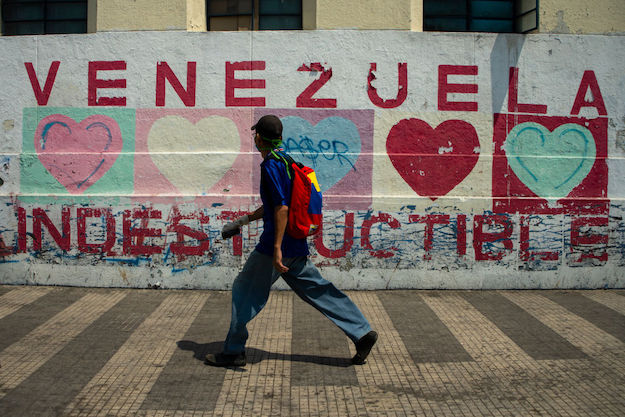After a five-month transition, Andrés Manuel López Obrador (AMLO) finally takes office on Dec. 1. Mexico watchers had ample opportunity to observe his style of governing and have been alternately surprised, pleased, shocked and concerned. There has been high drama, the exercise of power, politics and palace intrigue. What have we learned from Mexico’s transition?
It has become abundantly clear that AMLO’s number one priority is to consolidate power. Two factors drive this. First, his diagnosis of Mexico’s ills centers on the perception that it has become ungovernable. The language he used during the election campaign and the transition period suggest that he sees Mexico as broken and bleeding, and that democratization and devolution of power to the states have weakened the government’s ability to bring order to the country.
Second, having fought for the presidency for 18 years, and losing two elections, one of which he believes was stolen from him, AMLO is determined to seize full control of the Mexican state. The scale of his victory made that a lot easier for him. No one, not even AMLO himself, expected him to win on July 1 with 53 percent of the popular vote, an overwhelming majority for his Morena party in both chambers of Congress as well as control of a majority of state-level legislatures.
Despite such a landslide victory, a tidal wave of success across Mexican territory winning the popular vote in every single state except Guanajuato, AMLO decided that more was needed. Early on he negotiated a deal with PVEM (Green Party) which saw four legislators change allegiance, granting him the super-majority (two thirds) he craved in the Chamber of Deputies. His deal-making with some of the smaller parties in the Senate brought him close to a super majority in the upper house as well. This matters a great deal: controlling two-thirds of the votes in both chambers of Congress, alongside a majority of the state-level legislatures would mean that AMLO’s path to constitutional reform is obstacle free. Although he declared during the campaign that he would not seek constitutional reform during the first half of his administration, the temptation to use this considerable power, now that he has it, may prove irresistible.
But control at the federal level is not enough for the new president. His belief that Mexico has become ungovernable has led him to attempt to bring state governors back under the control of the presidency. In the immediate aftermath of the election, he met all 32 governors together and then proceeded to meet with each individually. The message was unequivocally clear: there is a new boss in town and he is not the same as the old boss. To drive home the point, AMLO announced that a newly appointed “State Coordinator of Development Programs” in each state would oversee the governors’ spending programs, allowing for the purest form of political control through the power of the purse. Though some governors have protested this interference in their autonomy, AMLO is undeterred.
The final piece in the puzzle of centralizing control involves the Mexican public service. Announcing a plan of “Republican Austerity” AMLO has pledged to cut salaries, slash benefits, eliminate high-level positions in the bureaucracy and move federal secretariats and agencies outside of Mexico City. All of this has already resulted in an exodus of experienced bureaucrats from the government service, one that will continue as the administration implements its plans after Dec. 1. AMLO appears to be deeply distrustful of the technocrats that have governed Mexico for the past 30 years, seeing in them a potential “deep-state”-like opposition to his plans for a “4th Transformation” of Mexico. By clearing out those not loyal to him, he then has the chance to replace them with loyalists who will not only unquestioningly do his bidding but may also remain in office long after his term has ended.
The cumulative effect of this control is to establish a near-hegemonic position for AMLO. The word hegemonic is not used lightly. Although in English we tend to define hegemony is terms of overwhelming power, the Gramscian definition is more appropriate here. The Italian philosopher Antonio Gramsci defined hegemony thus: the dominance of a particular power structure, not through coercion but through consent, so that it is seen as the necessary order of things. AMLO’s control of the apparatus of the federal and state levels of government give him the coercive power he craves, but he has demonstrated his desire to rule with at least the appearance of consent from the Mexican people.
Though some would see 53 percent of the popular vote as evidence enough that he has the support of the people, AMLO wants to receive regular validation and consent through the use of the plebiscite or “consulta publica” as he has labeled them. Already he has employed it twice during the transition, with the Morena party leadership promising to pass legislation to make such consultations a regular feature of the decision-making process. Involving a tiny percentage of the total Mexican electorate, these plebiscites have served AMLO’s purposes well. Not only can he claim to be following the will of the people (and as he like to remind us “the people are not stupid, the people are wise”), but the Mexican electorate appears to enjoy being asked its opinion. After the first consultation on the future of the new airport in Mexico City, AMLO’s overall approval rating shot up in one poll, despite adverse reactions from investors and the Mexican private sector. The novelty of being consulted, at least for now, appears to be pleasing to a Mexican electorate that has become distrustful of government and disillusioned with the fruits of democracy.
This preference for the people over elites, for popular sentiment over investor approval and the blessing of the private sector, sets a precedent for the new president’s vision of governance. AMLO’s “hegemonic power” will involve the dominance of his party, the primacy of the office of the president, and a personal connection to the Mexican people. Will this approach be effective as a form of governance? While it may be popular in the short term, the early evidence is that it may ultimately weaken the effectiveness and legitimacy of the administration. Already investors have become spooked and have begun to pull their money from Mexico and seek safer havens in places such as Brazil. Foreign direct investment in Mexico was down 74 percent in the third quarter of 2018 and national investors are holding back to see what the new administration brings after December. The Mexican stock market has fallen to lows not seen in four years and the peso has touched 21 to the dollar in recent trading.
Will AMLO listen to the markets and change course? Will he embrace a more orthodox form of decision-making once he assumes the presidency? Will great power bring great responsibility? What is certain is 2019 will be a pivotal year in the history of Mexico and its economic and democratic trajectory. Those of us who love Mexico and wish it well can only watch and hope for the best.
—
Duncan Wood is director of the Mexican Institute at the Wilson Center






